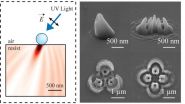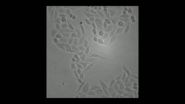The analysis, published in the European Heart Journal [1], identified factors in the SYMPLICITY HTN-3 trial, such as variations in the way the procedure was performed and changes in patients' medications and drug adherence, which may have had a significant impact on the results.
Results of the SYMPLICITY HTN-3 trial [2] sent shock waves through the cardiology community when they appeared to show that there was no significant difference in patient outcome between renal denervation and a sham procedure among patients with drug resistant hypertension. As a result, renal denervation procedures came to a halt.
Professor Thomas Lüscher, editor-in-chief of the European Heart Journal, said: "SYMPLICITY HTN-3 resulted in referrals for the procedure drying up completely, making further trials almost impossible. However, in the analysis published in the European Heart Journal, David Kandzari and colleagues shed light for the first time on the interpretation of the results and suggest that in many patients the number of renal denervations was probably insufficient to achieve the proper degree of reduction in blood pressure that previous research had suggested was possible."
Renal denervation is a minimally invasive procedure by which a catheter is inserted via an artery in the groin to reach the renal arteries (the arteries that supply the kidneys with blood). The catheter delivers a series of two-minute blasts of radiofrequency energy along each renal artery to disrupt the nerves. This is called radiofrequency ablation and by deactivating the renal nerves and, therefore, reducing sympathetic nerve drive, cardiologists aim to achieve a significant and sustainable reduction in blood pressure.
Prof Lüscher, who has co-authored an editorial [3] to accompany Prof Kandzari's paper, said: "Professor Kandzari's analysis shows there were significant variations in the way that patients in SYMPLICITY HTN-3 were ablated. His sub-analysis now shows, for the first time, that if patients received 12 or more ablations in the trial, they experienced the same blood pressure reduction as in the earlier, SYMPLICITY HTN-2 trial and as reported by a large number of registries."
The analysis by Prof Kandzari, director of interventional cardiology and chief scientific officer at Piedmont Heart Institute, Atlanta, USA, and his colleagues showed there was a link between the number of ablations and the subsequent reduction in blood pressure, because consistent and greater reductions in systolic blood pressure and heart rate were identified with a higher number of renal artery ablations. The sub-analysis also looked at variability in the way the renal denervation procedure was performed, and demonstrated greater decreases in systolic blood pressure depending upon ablation patterns.
"For instance, patients who received between 11 and 14 or more renal ablations had reductions in systolic blood pressure (as measured during visits to the clinic) of 5-14 mmHg more than similar patients having the sham procedure. However, a greater effect of renal denervation compared with the sham procedure was not seen in patients who had ten or fewer ablations. Overall, the number of ablation attempts ranged from one to 26, with most patients receiving at least eight ablations. Giving four ablations in a spiral (helical) pattern in both renal arteries was also associated with greater reductions in systolic blood pressure, but this was only done in 19 patients," said Prof Kandzari.
"These findings lead us to the hypothesis that the variability in how the procedure was performed may have contributed to the difference in efficacy seen in SYMPLICITY HTN-3 versus other SYMPLICITY studies. This opens the field for new trials confirming that more ablations delivered in a spiral pattern are able to provide an effective denervation. With this new information, renal nerve ablation may recover and new trials can be performed, which may provide the evidence needed to back up anecdotal and registry evidence that the procedure can save patients lives by successfully lowering of blood pressure in hypertensive patients at risk of heart attacks and strokes."
Other confounding factors were the changes to medications and patient adherence to their drugs. The protocol for the SYMPLICITY HTN-3 trial specified that patients should be maintained on several anti-hypertensive medications at the highest possible doses, without any changes unless clinically necessary, from the time of enrolment to the end of the six-month follow-up period. During this time, approximately 40 percent of patients required medication changes; nearly 70% of those drug changes were due to patients experiencing adverse events or side-effects related to the maximally-tolerated dosage of their hypertension medications.
"The extent of these medication changes was not expected given the trial design, and it's important that we further evaluate if these frequent medication changes could have contributed to efficacy outcomes seen in SYMPLICITY HTN-3," said Prof Kandzari. "This analysis also suggests that changes in patient adherence to complex drug therapy could be another factor to partly explain the large blood pressure drop in patients who got the sham procedure. It was noted, for example, that a higher proportion of African-Americans were prescribed vasodilator therapy, and marked reductions in blood pressure were seen in the sham group of African-Americans in the trial."
He concluded: "Though further research is necessary to ultimately determine the full clinical potential of renal denervation, these analyses are important to guide us in the right direction for future trials. With this new information, new trials can be performed that may provide the evidence needed to back up anecdotal and registry evidence that the procedure can potentially improve patient outcomes by successfully lowering of blood pressure in hypertensive patients at risk of heart attacks and strokes."
INFORMATION:
Notes:
[1] "Predictors of blood pressure response in the SYMPLICITY HTN-3 trial", by David E. Kandzari et al. European Heart Journal. doi:10.1093/eurheartj/ehu441. Published online: http://eurheartj.oxfordjournals.org/content/early/2014/11/13/eurheartj.ehu441
[2] "A controlled trial of renal denervation for resistant hypertension", by Deepak L. Bhatt et al. New England Journal of Medicine 2014; 370:1393-1401; April 10, 2014; doi: 10.1056/NEJMoa1402670
[3] "Renal denervation: simply trapped by complexity?", by Felix Mahfoud and Thomas Felix Lüscher. European Heart Journal. doi:10.1093/eurheartj/ehu450. Published online: http://eurheartj.oxfordjournals.org/content/early/2014/11/13/eurheartj.ehu450




